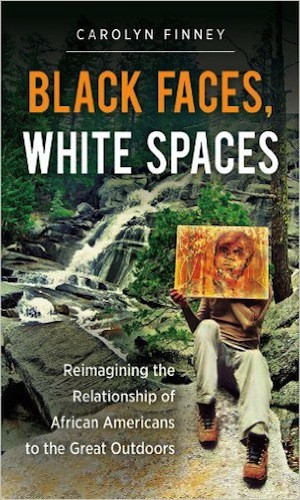“Who Is ‘Everybody’?”
by Alexandra Molotkow

Guernica: In a time when black bodies are still routinely patrolled and brutalized for being in the “wrong” spaces — Trayvon Martin, people say, shouldn’t have been in that neighborhood, or Renisha McBride — how have the legacies of slavery, Jim Crow, and racial violence shaped cultural understandings of the “great outdoors”? What to make of the tension between the exclusion of black bodies and the idea of natural spaces being “for everybody”?
Carolyn Finney: One of the questions I always ask is: Who is “everybody”? Because I work with a lot of people in the National Parks Service, I know that’s what some of them really mean. But you have to break this down and look at what “everybody” means historically. You certainly weren’t talking about native people who had been kicked out of those spaces so the parks could be created. You certainly weren’t talking about black people who were enslaved Africans then freed and living under Jim Crow. You certainly weren’t talking about Japanese people who were just about to be put into internment camps during World War II. And I could go on. So who is “everybody”? And how has the meaning of “everybody” changed?
The people making the decisions about “everybody” two hundred years ago are not the same kind of people as the ones who are making those decisions today. I think that’s where a lot of the conflict arises.
Hope Wabuke interviews Dr. Carolyn Finney, author of Black Faces, White Spaces: Reimagining the Relationship of African Americans to the Great Outdoors. Read the rest here.